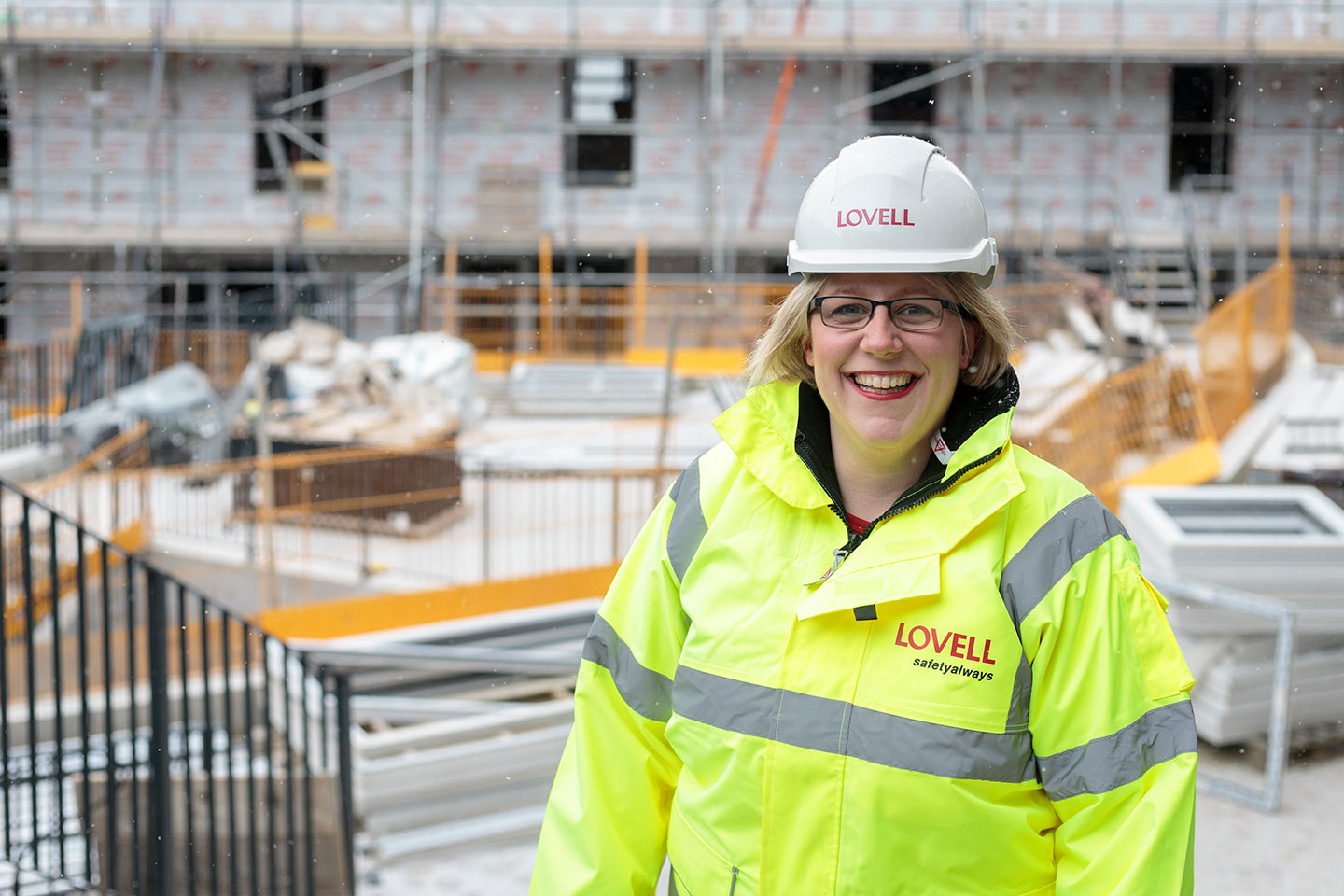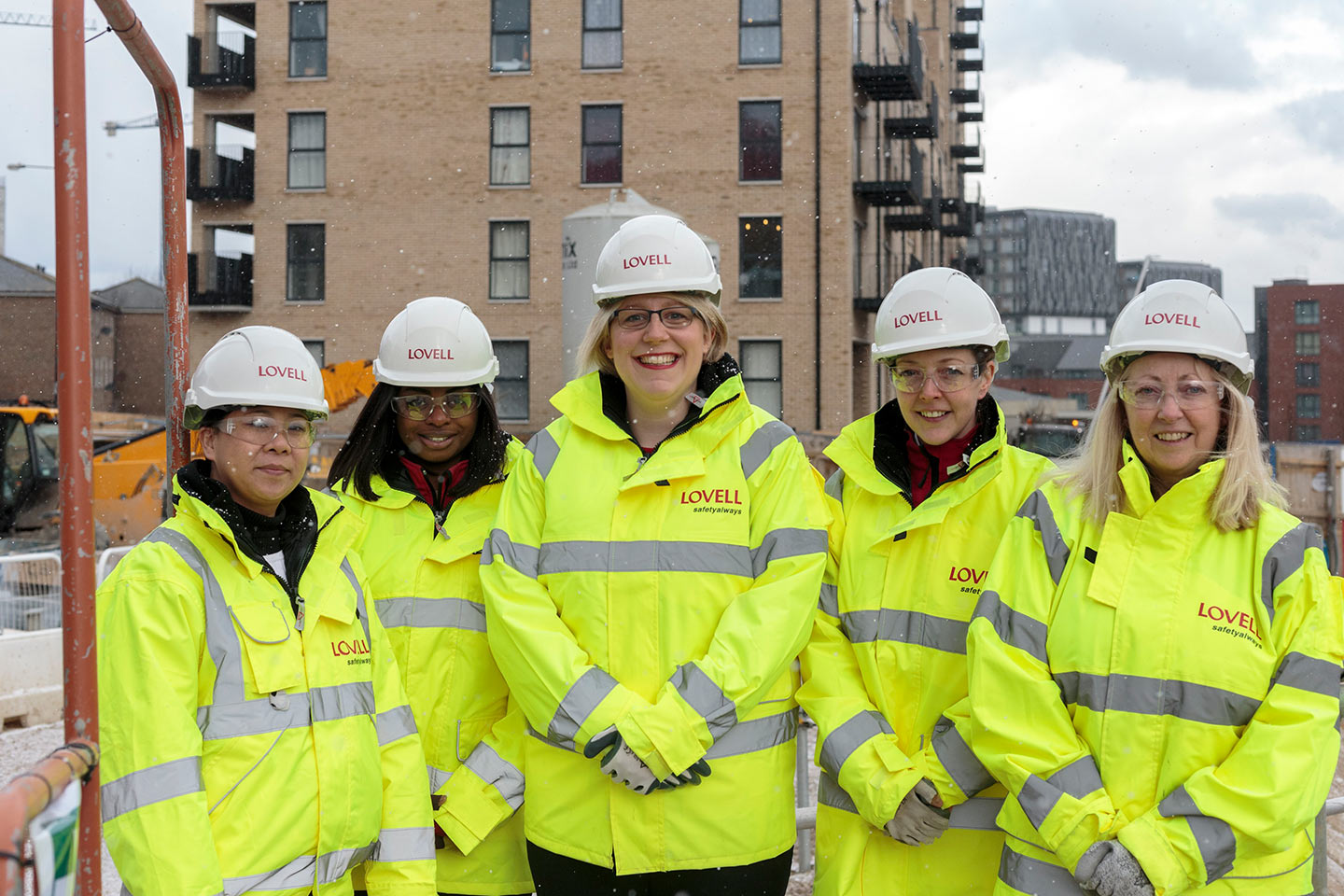“Last year I stood on the top of a ten-storey building and thought: this is the best thing I’ve ever done,” says Sarah Frith, who works as a Technical Manager at housebuilder Lovell.
 The buzz that comes from working as part of a team to create a building is just one reason why Sarah passionately believes that the construction industry offers great careers for women. Since joining Lovell 18 months ago, as the only woman among four Technical Managers, Sarah has redressed the balance of the team that reports to her and 50 per cent are now women.
The buzz that comes from working as part of a team to create a building is just one reason why Sarah passionately believes that the construction industry offers great careers for women. Since joining Lovell 18 months ago, as the only woman among four Technical Managers, Sarah has redressed the balance of the team that reports to her and 50 per cent are now women.
This is unusual in the construction industry which has long been male-dominated. ONS data* shows the poor representation of women at just 13%. Despite the skills shortage and a need to entice new recruits, relatively few women are attracted to a career in construction and the stereotype of ‘builders in hats’ widely persists.
Collaboration and teamwork are essential in constructing a building. Sarah says: “When recruiting for my team, I look for good technical knowledge, strong organisational skills and the ability to work effectively under stress; people must be outstanding communicators and team players too. Gender is irrelevant, but the women I recruited were the best candidates and have since proved extremely effective in their roles.”
 As a Technical Manager Sarah leads Lovell’s large-scale housing projects in Islington, Ealing and Woolwich, which together are delivering around 1,300 homes. She oversees management of the projects, from concept through to construction, in a wide role which ranges from working on bids, appointing consultants and securing building control approval to the day-to-day management of a team of design co-ordinators and plenty of troubleshooting on site. The final goal is the successful handover of homes to clients.
As a Technical Manager Sarah leads Lovell’s large-scale housing projects in Islington, Ealing and Woolwich, which together are delivering around 1,300 homes. She oversees management of the projects, from concept through to construction, in a wide role which ranges from working on bids, appointing consultants and securing building control approval to the day-to-day management of a team of design co-ordinators and plenty of troubleshooting on site. The final goal is the successful handover of homes to clients.
Sarah’s passion for the industry started in her early teens when she dreamed of constructing buildings. After reading architecture at Cambridge University, she continued her studies to qualify as an architect while working for different architectural practices. Her decision to switch to a technical role was driven by a desire to be more closely involved in the detail of the construction process.
She comments: “This is a brilliant job for women. You need to be robust, prepared to speak out and thrive in a high-stress environment with tight deadlines. But it’s a truly collaborative role and there’s enormous satisfaction in building homes and making a difference to society.”
